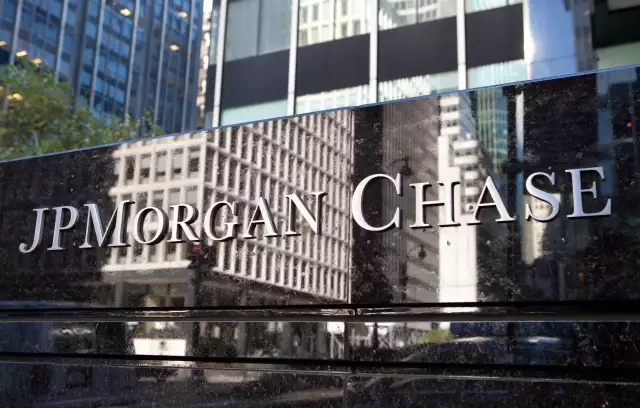Faulty bank stress tests are hurting the mortgage market
Faulty bank stress tests are hurting the mortgage market
During last week’s earnings call for JPMorgan Chase (JPM), CEO Jamie Dimon rebuked the Federal Reserve Board and other regulators for what the veteran operator described as “ridiculous” bank stress tests. He then went on to say that JPM and other banks will be forced to reduce 1-4 family mortgage exposures because of the Fed’s poorly conceived bank stress tests.
“We don’t agree with the stress test,” Dimon said. “It’s inconsistent. It’s not transparent. It’s too volatile. It’s basically capricious [and] arbitrary. We do 100 [stress tests] a week. This is one. And I need to drive capital up and down by 80 basis points? So, we’ll work on it. We haven’t made definitive decisions. But I’ve already mentioned about how we dramatically reduced [risk weighted assets] RWA this quarter. We may do that again next quarter.”
What is raising Jamie Dimon’s ire? Regulators recently determined that JPM could lose $44 billion in a highly stressed economic scenario, in large part on its $250 billion portfolio of 1-4 family mortgages.
The stress test result for JPM seems incredible and raises questions about the analytical method used by the Fed’s supervision staff. The loss number seems to have no connection to the bank’s actual financial performance, which is excellent, or the broader regulatory record in terms of mortgage losses for all US banks.
When the Dodd-Frank law was passed a year later in 2010, Congress included an expanded legal mandate to conduct annual stress tests and for hundreds of banks. Since 2012, the stress tests have devolved, from a modestly useful private annual process focused on the top institutions to a public media circus focused on bank earnings. Pre-COVID, the Fed’s stress tests were merely a monumental waste of time and money. But now the stress tests have become a menacing counter-cyclical force that could further drive down liquidity in the mortgage market over the next year.
Part of the problem with the Fed stress tests is that, like most of economics, the tests are backward looking and use 2008 as the benchmark for future losses. The Bank Policy Institute in Washington published this assessment:
“For capital adequacy purposes, regulators have quantified operational risk by using past litigation costs and regulatory fines, primarily judgments resulting from mortgage losses as part of the global financial crisis. Leaving aside how poor a proxy those litigation losses are for operational risk in 2022 as a general matter, it is worth noting specifically that a bank funding a reserve at the Fed with a commercial or retail deposit is running zero litigation risk.”
Loss rates on bank owned 1-4s are basically zero and loss given default is deeply negative as of Q1 2022. As readers of the Institutional Risk Analyst blog know, JPM has perhaps the highest quality 1-4 book in the banking industry, including loans and mortgage servicing rights. Dimon clearly thinks the Fed tests are bunk, but admits that he must now build capital and also reduce his bank’s exposure to residential mortgages. JPM chief financial officer Jeremy Barnum said:
“As a result of the recent stress tests and the already scheduled GSIB increase, we will build capital and continue to effectively and actively manage our RWA. In order to quickly meet the higher requirements, we have temporarily suspended share buybacks.” The price of JPM in the global markets fell sharply due to the suspension of share repurchases.
The situation with respect to the Fed and bank stress test results is more than a bit ironic. The potential losses that the Fed’s fantastic stress tests envision are the direct result of the manipulation of the housing sector and global credit markets by the Federal Open Market Committee under “quantitative easing” or QE.
Author James Grant famously observed, the Fed is both arsonist and fire fighter wrapped all in one neat package. After sending the mortgage market on a roller-coaster ride over the past two years, soon the Fed is going to stop purchasing mortgage backed securities. At the same time, the Fed’s supervisory personnel are forcing JPM and other banks to sell 1-4 family mortgages in order to reduce capital requirements. What’s wrong with this picture?
“[C]ertain loan growth is discretionary and portfolio-based, think of mortgages, and there’s a good chance we’re going to drive it down substantially,” said Dimon. “We’re probably going to drive down mortgages.” Other large banks will be forced to follow the example of JPM.
Dimon continued to lambast the Fed: “This [stress test has] got bad effects for the economy...and [for] the mortgage business in particular is bad for lower income mortgages, which hurts lower income people and minorities… We [still] haven’t fixed the mortgage business, and now we’re making it worse.... If it doesn’t make sense to own mortgages, we’re not going to own them.”
In 2020, when the worst fears of COVID were driving US banks to set aside $60 billion in reserves for future loss, JPM set aside $16 billion, reserves that were ultimately recaptured back into income a year later because actual loan loss rates were so low. Yet now, a year later and despite the actual evidence in the public record, federal bank regulators want us to believe that loss rates on prime 1-4s held in portfolio by JPM and other banks will be substantially higher than in 2008.
“If you go to Europe, okay, the capital held against mortgage is like a fifth of what we have to hold here,” says a clearly annoyed Dimon. “And we can obviously manage that and standardized risk-weighted assets do not represent returns or risk… Our job is to serve clients through thick or thin, good or bad with what they need, how they need it. And now we spend all of our time talking about these ridiculous regulatory requirements.”
Leaders in the mortgage industry and among the regulators at the Federal Housing Finance Agency, Ginnie Mae and HUD need to have a conversation with the folks in the Supervision and Regulation function at the Fed. There are many reasons why commercial banks have fled the market for government-insured loans and Ginnie Mae MBS, but the chief reason is the absurd stress testing and risk weighting that US regulators assign to 1-4 family loans due to Dodd-Frank.
But more important, the abortive results of the latest bank stress tests should give members of Congress such as Dodd-Frank supporter Elizabeth Warren (D-MA) pause in continuing to rely on these legally required by analytically suspect assessments. Should Fed economists really be able to arbitrarily set capital guidelines for individual public companies? These decisions ought to be confidential and should not be made public.
The Fed’s stress tests don’t test the ability of banks to withstand losses, but rather the skill of bank managers at responding to the inane procedures set forth by the academic economists that run the central bank. The real risk in banks is not what you can read in published financials or Fed stress tests, but the unknown. But what is clear from this year’s stress test is that the hand in charge of monetary policy at the central bank does not know what the other hand that is responsible for large bank supervision is doing. Maybe they should talk.



